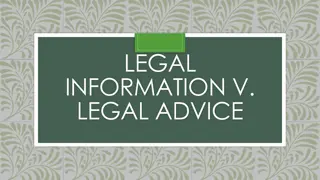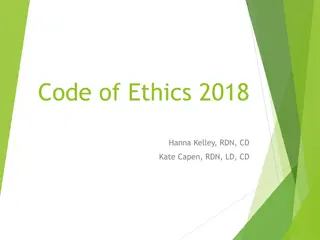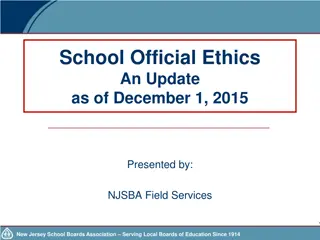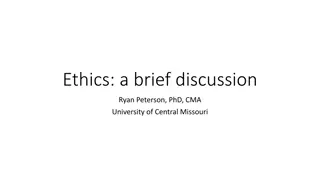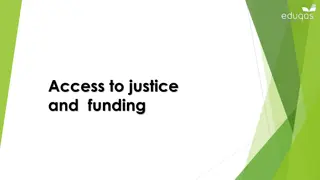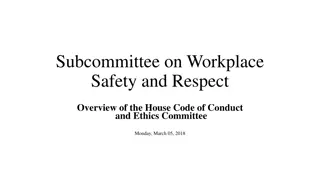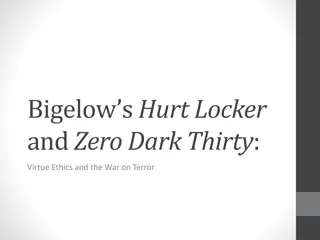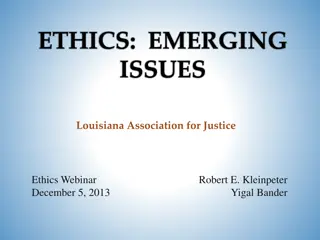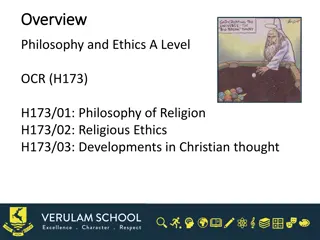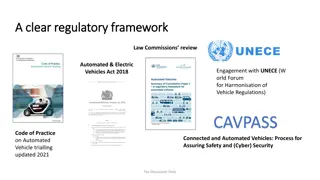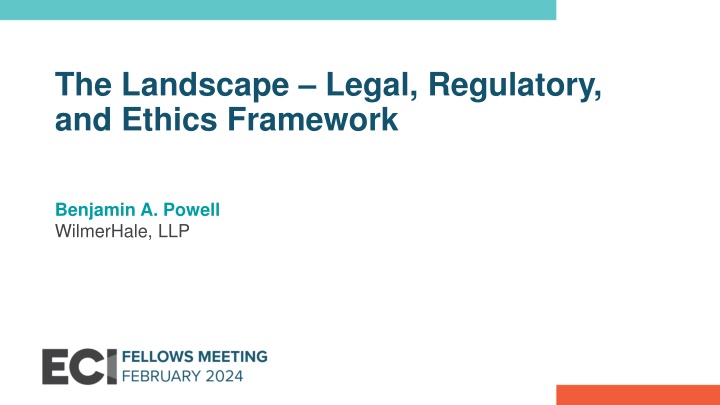
The Legal, Regulatory, and Ethics Framework
Landscape of legal, regulatory, and ethical considerations in the business world, including risks, compliance, and governmental activities. Discusses AI regulations, executive orders, congressional actions, and potential legislation affecting various aspects of technology and privacy.
Download Presentation

Please find below an Image/Link to download the presentation.
The content on the website is provided AS IS for your information and personal use only. It may not be sold, licensed, or shared on other websites without obtaining consent from the author. If you encounter any issues during the download, it is possible that the publisher has removed the file from their server.
You are allowed to download the files provided on this website for personal or commercial use, subject to the condition that they are used lawfully. All files are the property of their respective owners.
The content on the website is provided AS IS for your information and personal use only. It may not be sold, licensed, or shared on other websites without obtaining consent from the author.
E N D
Presentation Transcript
The Landscape Legal, Regulatory, and Ethics Framework Benjamin A. Powell WilmerHale, LLP
Agenda Legal and Business Risks Legislative & Regulatory Landscape Compliance in a Dynamic Legal Environment
Legal Risks Discrimination/Bias Hallucinations Disinformation Accuracy Deceptive or Unfair Trade Practices Confidentiality and Data Privacy Ethics Cybersecurity Contracting Intellectual Property
Legal Landscape Biden Executive Order sets an ambitious agenda for federal agencies across a broad range of issues. Federal agencies are releasing guidance on AI related issues within their jurisdiction and are figuring out how existing rules apply, though very little AI specific rulemaking (yet). After a year of hearings on the issue and working groups at Congress, bills on narrow issues are being introduced. States have been moving quickly to regulate: (1) comprehensive data privacy laws; (2) narrow use case laws; and (3) many AI bills introduced in 2023, some of which passed. EU AI Act is a comprehensive risk-based law that will be influential, though other countries are taking a decidedly more pro-innovation approach Voluntary frameworks have been instructive for companies trying to work through AI governance and related issues around technology adoption.
Executive Branch Executive order consisted of approximately 120 directives to departments and agencies to produce AI standards and regulations in vast number of areas. Significant roles for the Department of Commerce, Department of Homeland Security, and national security agencies. Requires that developers of the most powerful AI systems share their safety test results and other critical information with the US government Directs the development of standards, tools, and tests to help ensure that AI systems are safe, secure, and trustworthy Flurry of activity at federal agencies in response to the Executive Order (e.g. Requests for Information, Notices of Proposed Rulemaking, Guidance) Agencies like the FTC are applying existing legal tools to their fullest extent in enforcement actions and to build on them where new ones may be needed.
Congress Recognizes the importance of the issue and the speed at which the technology is moving; has held multiple hearings over the past year around all aspects of AI Three potential approaches Legislative directive to bolster the EO and prevent future administration from reversing it (e.g., directing NIST/Commerce to develop compliance frameworks to achieve the similar goals) Comprehensive legislation (e.g., Sens. Thune (R-SD) and Klobuchar (D-MN) AI Research, Innovation and Accountability Act ) Targeted legislation where there is bipartisan support (or at least recognition of the issue) Intellectual property Elections and disinformation Potential for AI to restart the push for a federal privacy law Upcoming election in 2024 makes meaningful legislation in near term unlikely
State Activity At the state level, legislatures are regulating AI in two primary ways: 1) incorporating AI provisions into privacy laws and 2) developing AI-specific rules for certain use cases (i.e., employment) New state privacy laws define personal information broadly and create compliance obligations for companies that are subject to these laws (this is relevant for both training AI models and for AI use cases) Certain US state privacy laws are creating rights for residents to opt out of profiling in furtherance of solely automated decisions that produce legal or similarly significant effects concerning the consumer Some jurisdictions have passed laws that address the use of AI narrow contexts, for example, in hiring and employment (e.g., NYC, IL) In the 2023 legislative session, at least 25 states, Puerto Rico, and DC introduced artificial intelligence bills, and 15 states and Puerto Rico adopted resolutions or enacted legislation (according to the National Conference of State Legislatures)
Litigation Litigation involving AI is relatively nascent, but rise of Generative AI has resulted in numerous cases being filed over the past year Likely to see novel product liability claims and increased exposure for developers of AI systems Issues Privacy Discrimination/bias Intellectual property Defamation
International EU AI Act establishes a risk-based approach to regulating AI South Korea and Japan are taking a flexible, principles-based approach UK is taking a hands-off, pro innovation approach China has AI regulations with broad coverage and expansive compliance obligations Other countries, including Brazil and Canada, are exploring AI laws and regulations EU AI Act Risk Levels
Voluntary Codes of Conduct and Frameworks Tech Accord to Combat Deceptive Use of AI in 2024 Elections Group of Seven nations Hiroshima Process International Guiding Principles for Advanced AI systems and International Code of Conduct for Advanced AI Systems White House Voluntary AI Commitments White House Blueprint for an AI Bill of Rights NIST AI Risk Management Framework 1.0 Singapore Model AI Governance Framework
Compliance in a Dynamic Legal Environment Legal landscape is developing rapidly, as are norms and best practices. Benchmarking is important, but all companies are situated differently with different cultures/risk tolerances Legal advice needs to recognize both (1) where the law is, and (2) where enforcement may go without the law. Important to engage the Board on these issues early on Recognize that the speed at which technology and law are changing, and the likely inconsistencies across legal regimes, necessitates flexibility Leverage frameworks and existing compliance programs Use sound judgment and have a consistent and principled approach in the absence of clear legal guidance Some challenges are novel and specific to AI, but some are well-known




